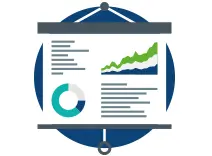
Any organisation which wants to remain competitive needs to use hardware, software and data to infuse itself, its employees, its products and services, and even its customers, with increased intelligence.
Your customers are demanding it. Your competitors are already doing it. But your contact centre infrastructure is not up to the task and you’re not in a position to rip and replace your existing technology.
So, how can you deliver the digital customer experience your customers (and board) are demanding by using what you already have?
The advantages of digital customer experience
Most companies only have a few means of differentiating themselves from the competition. Only very few have unique products and services, so for most, the parameters they have to play with are quality, price, and service.
In heavily commoditized or standardised markets such as energy, retail, and financial services, playing on price only leads to a race to the bottom that trashes margins. If products can’t be innovative or of a quality that allows for differentiation (and a premium price) then the way the company distributes its products and interacts with its customers must compensate.
According to CCW digital customer experience report, 63% of customers would pay more for the same product if it came with better service. Amazon built one of the world’s most valuable companies by turning this on its head and offering better (digital) service as well as lower prices.
In recent studies, such as Dimension Data’s Benchmarking Report, companies say they are struggling to deliver exceptional customer experience for several reasons including limited technology budgets, complex internal processes, lack of multi-channel, insufficient or incomplete customer data, and complicated IT systems.
The use of the right technology can help you overcome these challenges. If you can’t rip and replace, you can give your people the ability to take control of all data, systems, and processes – which is the only way to deliver a transformational digital omni-channel customer experience.
Break it down
Digital customer experience is about giving the customer control. In order to do, you need to decide how you want to funnel people down different channels at different times or for different transaction types, then set up the processes, workflows, and routing to do that.
This involves breaking down all barriers between your data, process and system silos because they are stopping you (and your customers) from exerting control over how interactions go. Once you’ve done this you can seize the agenda by showing the customer that you’re in control – from proactive messaging to front-end bots to take command of situations and then following up.
Previously, eliminating data siloes would have required integrating all the contact centre’s different applications, databases and channels with each other. However, these can instead be integrated via the desktop using APIs (Application Program Interfaces). This vastly simplifies the process of integrating multiple systems because they don’t have to ‘talk’ to one another, just to the desktop or workflow.
With this Single Customer View, your contact centre agents can seamlessly manage interactions that cross multiple channels. With access to company-wide data about individuals and transactions, agents can personalise upsell, cross-sell, and renewals offers to meet a customer’s exact needs and circumstances.
For example, if a customer has recently browsed products on your website, it would be handy to extract this meta-data and let the agent know to make an upsell offer. If this data is appropriately tagged it doesn’t take a sophisticated workflow solution to do this.
One of the most mentioned roadblocks to delivering personalised, omni-channel customer service is inappropriate, outdated or complex technology. However, the technology to get the right data to an agent at the right time needn’t be complex or expensive. Neither does it require you to throw away your technology investments and start again.
With the desktop workflow software acting as a central point of control, extracting data from multiple siloes and systems, the technical, organizational, and skills-related challenges of delivering digital omnichannel customer experience can be addressed.











